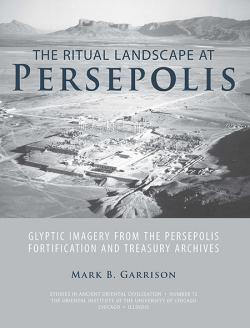Mark B. Garrison
Download Purchase Terms of Use
There are, perhaps, no more contentious issues within the study of Achaemenid Persia than those surrounding its religion(s) and religious iconography. Owing to the role that fire plays in Zoroastrian beliefs in later periods in Iran, almost any discussion of the subject of Achaemenid religion will eventually turn to the identification of sacred fire, fire temples, fire worship, and fire altars in the archaeological, epigraphic, and literary records.
The focus of this book is a corpus of glyptic imagery preserved as impressions on two large archives of administrative tablets from Persepolis, the Persepolis Fortification archive (509–493 BC) and the Persepolis Treasury archive (492–457 BC). The glyptic imagery here published concerns representations of what have been traditionally termed “fire altars” and/or “fire temples.” Most of this glyptic evidence has never been published; many of the structures and the scenes in which they occur are strikingly original.
The goals of this study are to introduce a new corpus of visual imagery concerning religious ritual in the Achaemenid period and to explore the significance of this visual language for our understanding of ritual traditions emerging within the heart of the empire at its most critical formative period, the reign of Darius I. This study seeks also to use the Persepolitan glyptic evidence as a springboard to re-visit the most famous “fire altar” depicted in Achaemenid art, that on the tomb relief of Darius I at Naqš-e Rostam. The glyptic images assembled in this study are the most numerous, the most visually complex, and the best dated and contextualized evidence that currently exists for the study of fire in ritual, and religious ritual more broadly, in early Achaemenid Iran. This study is also an initial step in the development of a religious topography for the zone encompassing Persepolis and Naqš-e Rostam, a topography that includes both images and the built environment.
Table of Contents
Preface
List of Abbreviations
Acknowledgments
Bibliography
Chapters
1. The So-called Fire Altars in Achaemenid Art: Background and Previous Research
1.1. Introduction
1.2. The “Zoroastrian Question”
1.3. Zoroastrian Fire Worship and “Fire Altars”
1.4. Terminology
1.5. The Sources for the Visual Representations of the Stepped and the Tower Structures at Persepolis in the Reigns of Darius I and Xerxes
1.6. Previous Research on the Depiction of “Fire Altars”
1.7. Images and Contexts
2. Seals and Archives at Persepolis: An Introduction
2.1. Introduction
2.2. The Persepolis Fortification Archive (509–493 BC)
2.3. The Persepolis Treasury Archive (492–457 BC)
2.4. Persepolitan Glyptic Imagery
3. The Stepped and the Tower Structures in Persepolitan Glyptic: A Catalog
3.1. Introduction
3.2. Scenes Showing only the Stepped Structure in Persepolitan Glyptic
3.3. Scenes Showing only the Tower Structure in Persepolitan Glyptic
3.4. Scenes Showing Both the Stepped and the Tower Structures in Persepolitan Glyptic
4. The Stepped and the Tower Structures in Persepolitan Glyptic: Discussion
4.1. Introduction
4.2. Typology
4.3 Syntax of Scenes
4.4. The Significance of the Stepped and the Tower Structures
4.5. Synopsis
5. Glyptic Imagery as Social Identity: The Seals of Ziššawiš
5.1. Introduction
5.2. Ziššawiš, a Persepolitan Administrator
5.3. PFS 83*, the First Seal of Ziššawiš in the Fortification Archive
5.4. PFS 11* (T1), the Second Seal of Ziššawiš in the Fortification Archive
5.5. Concluding Remarks: The Seals of Ziššawiš
5.6. PTS 6*, the Seal of Ziššawiš in the Treasury Archive
6. A Return to Naqš-e Rostam
6.1. Introduction
6.2. The Setting
6.3. The Façade of the Tomb of Darius
6.4. Summation
- Studies in Ancient Oriental Civilization 72
- Chicago: The Oriental Institute, 2017
- ISBN 978-1-61491-034-3
- Pp. xlvi + 448; 202 figures, 63 plates
- Softcover, 9" x 11.75"
- $59.95
For an up to date list of all Oriental Institute publications available online see:
And see the Chronological Lists of OI Publications










 Stumble It!
Stumble It!

No comments:
Post a Comment